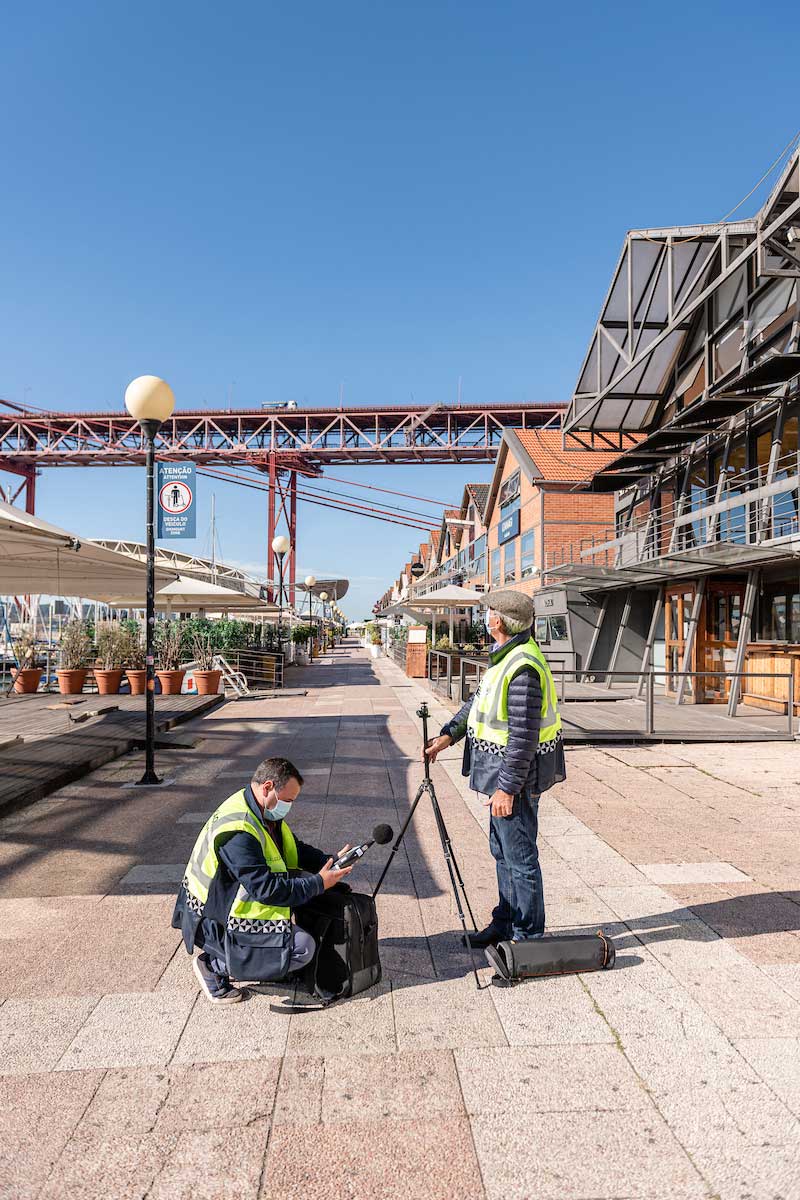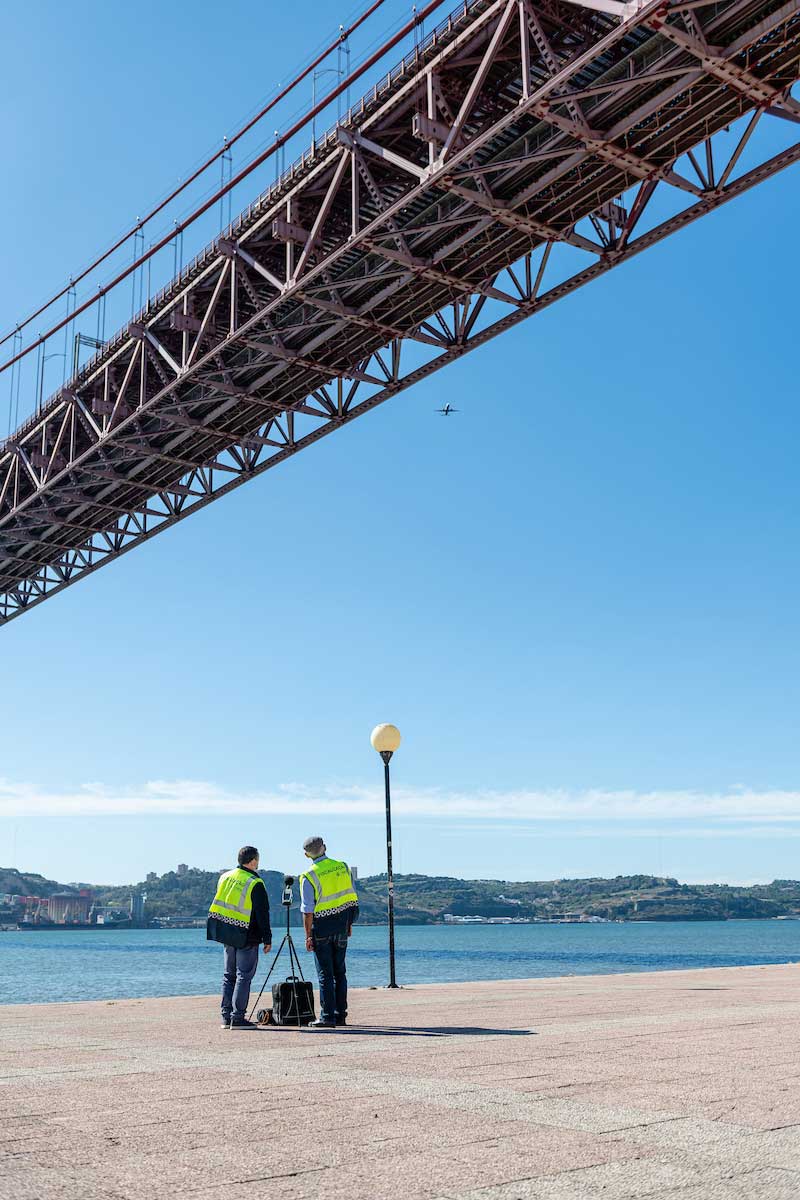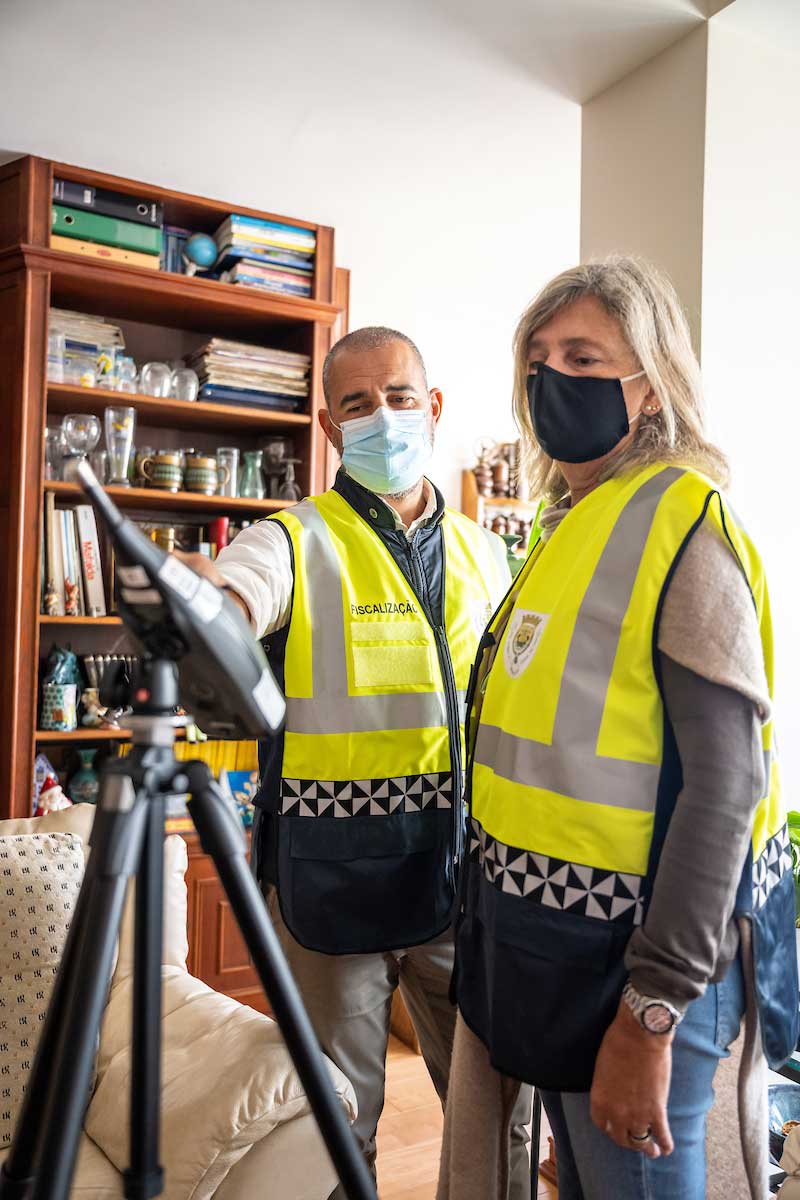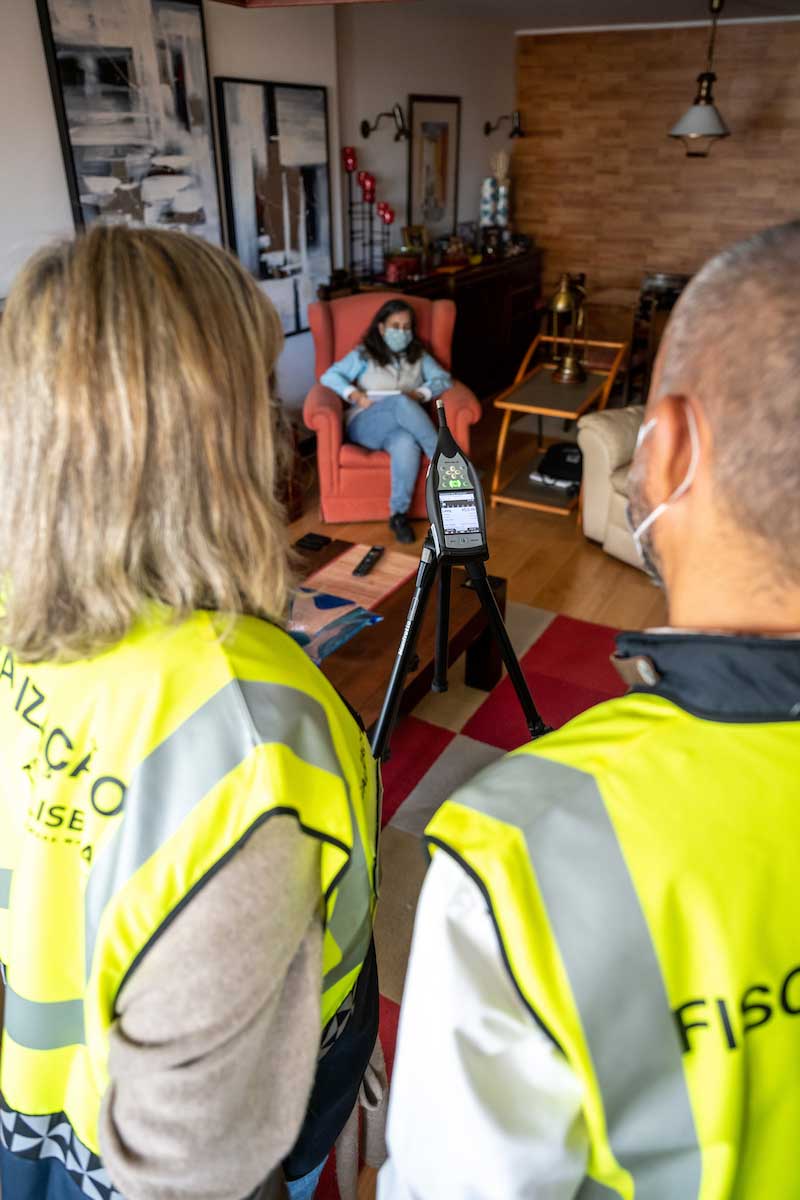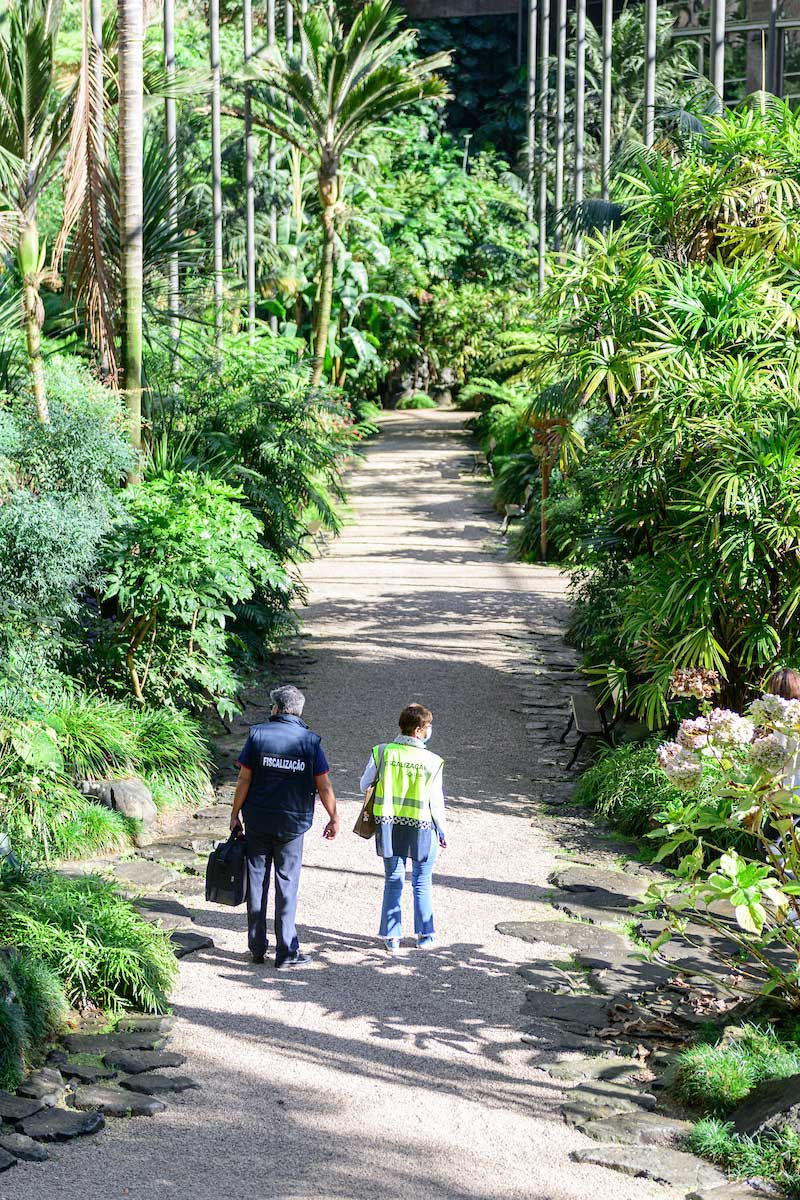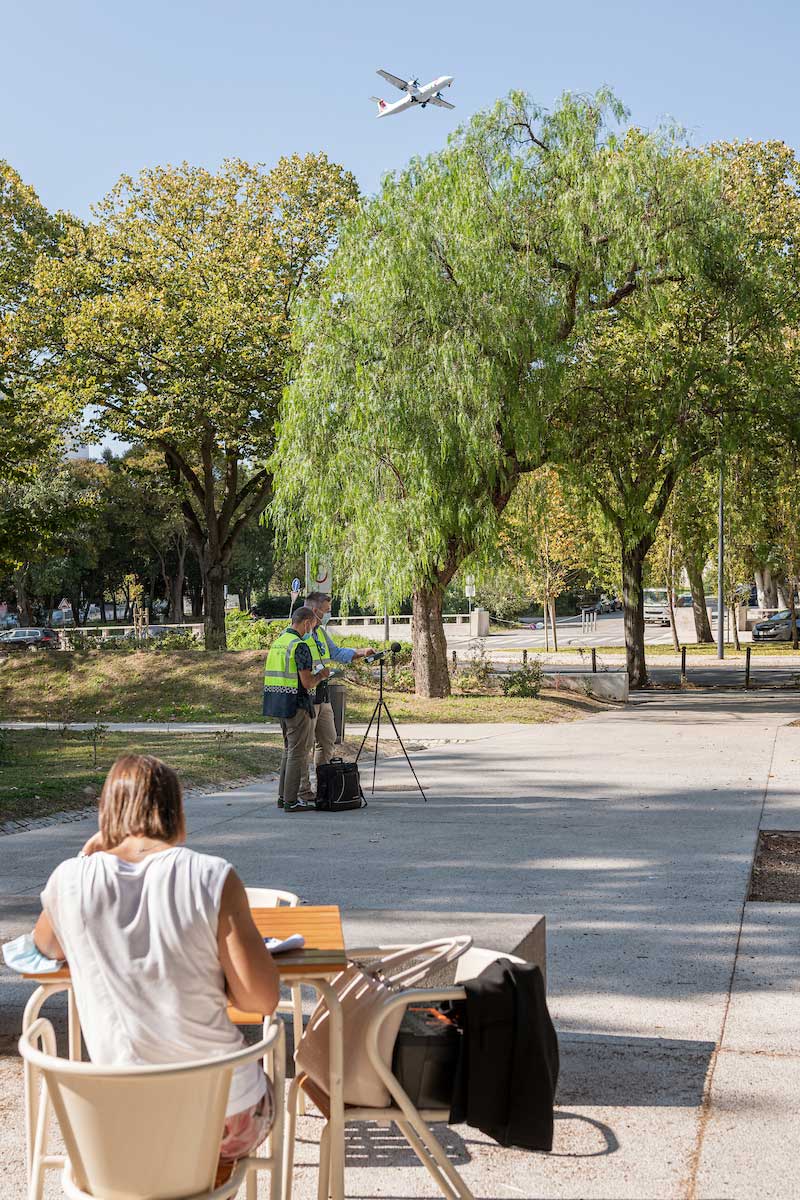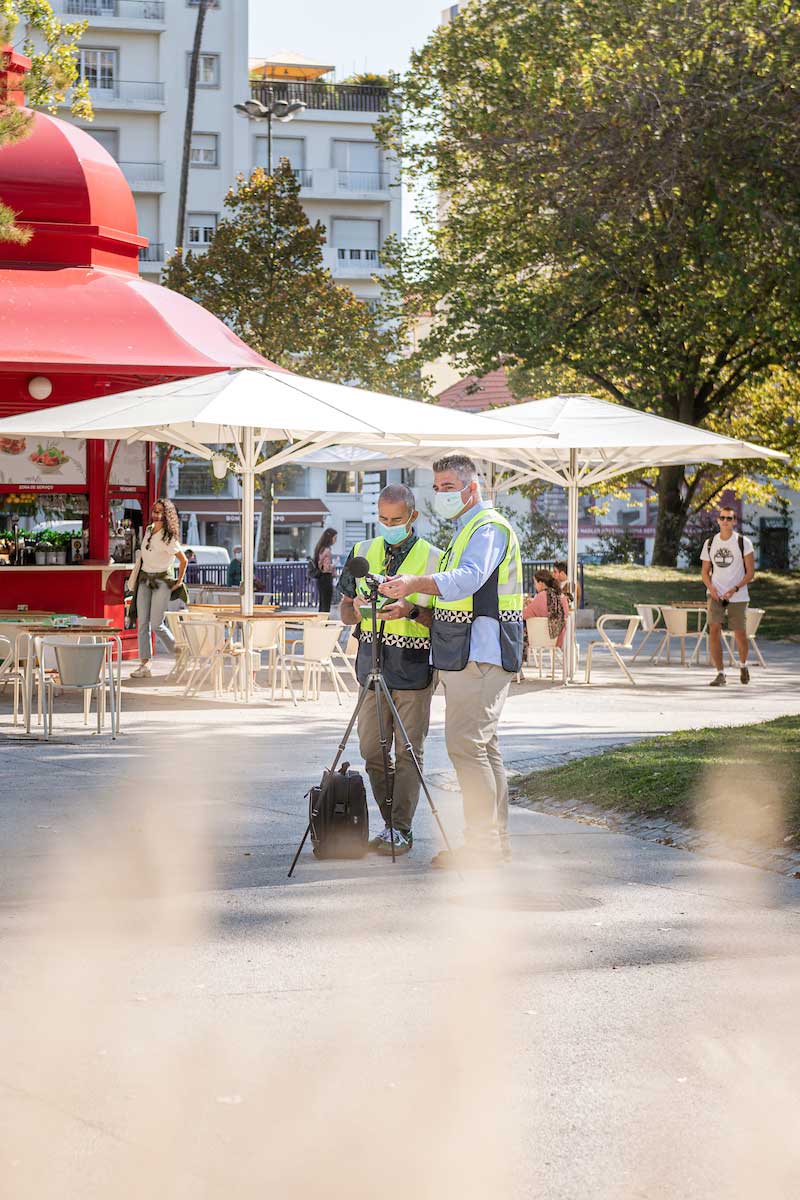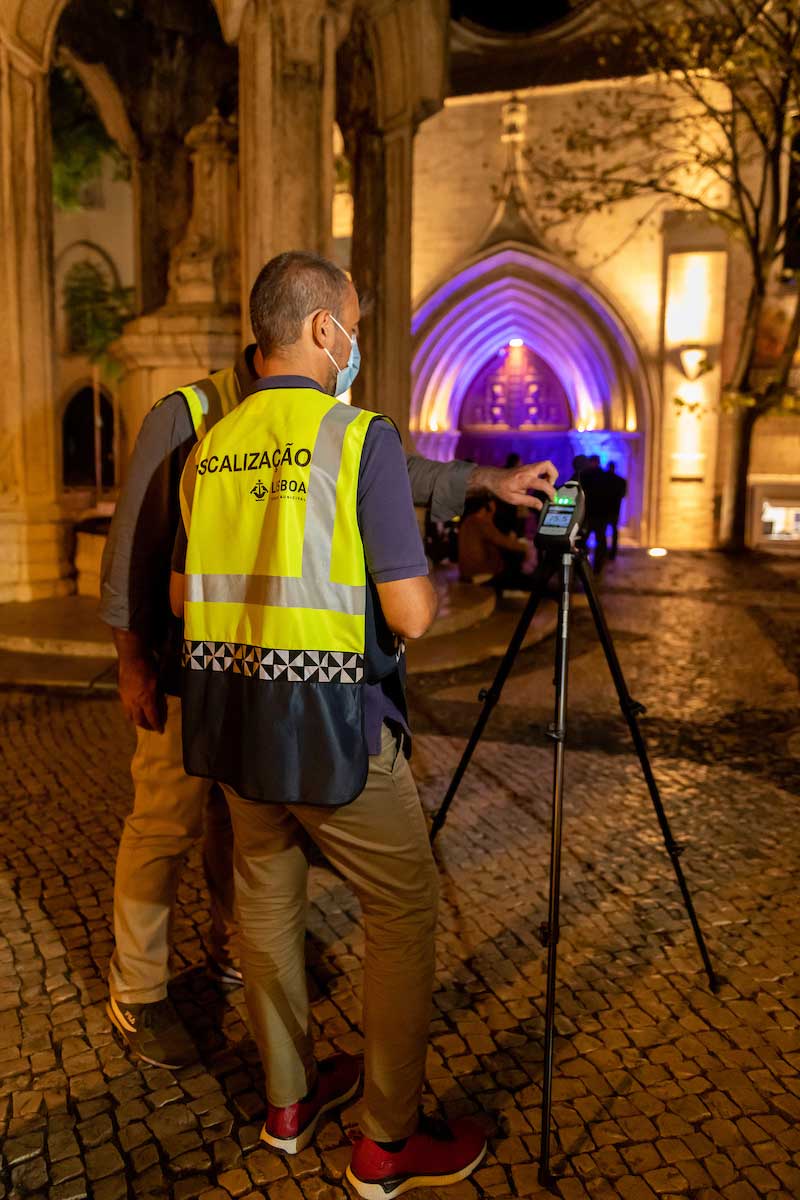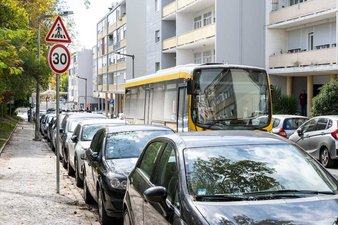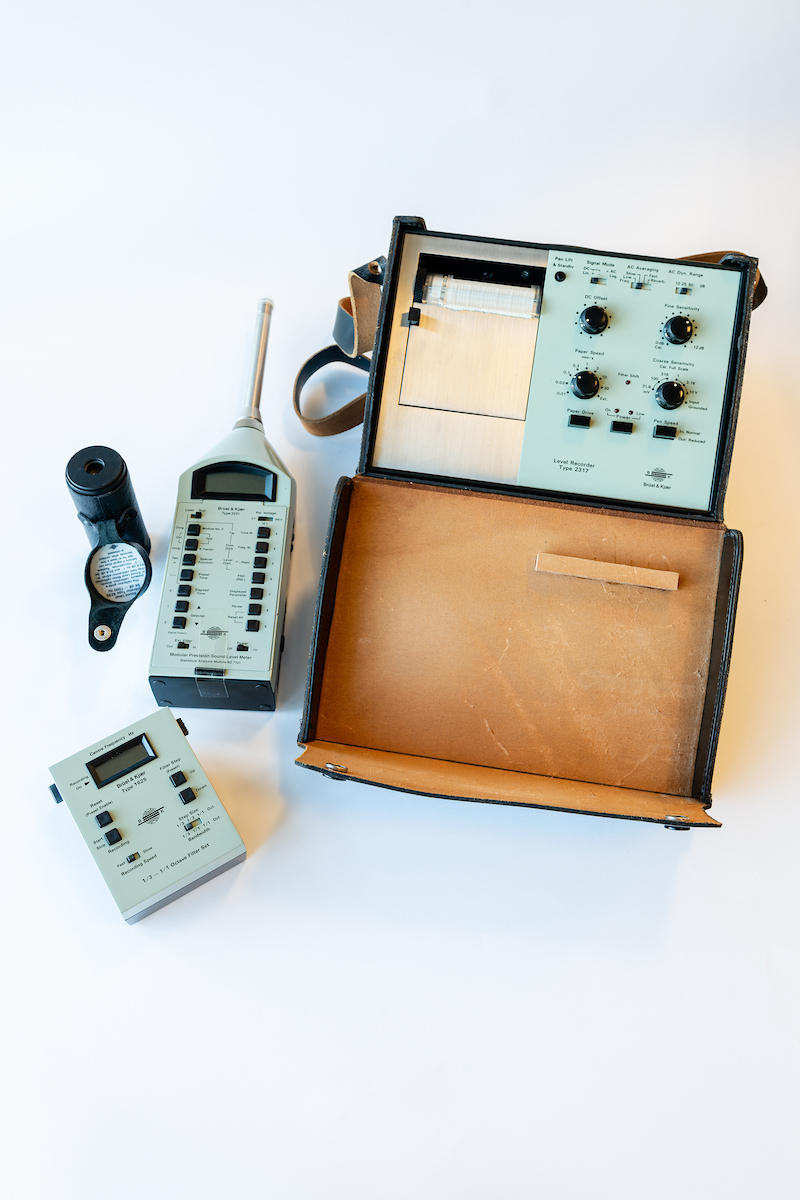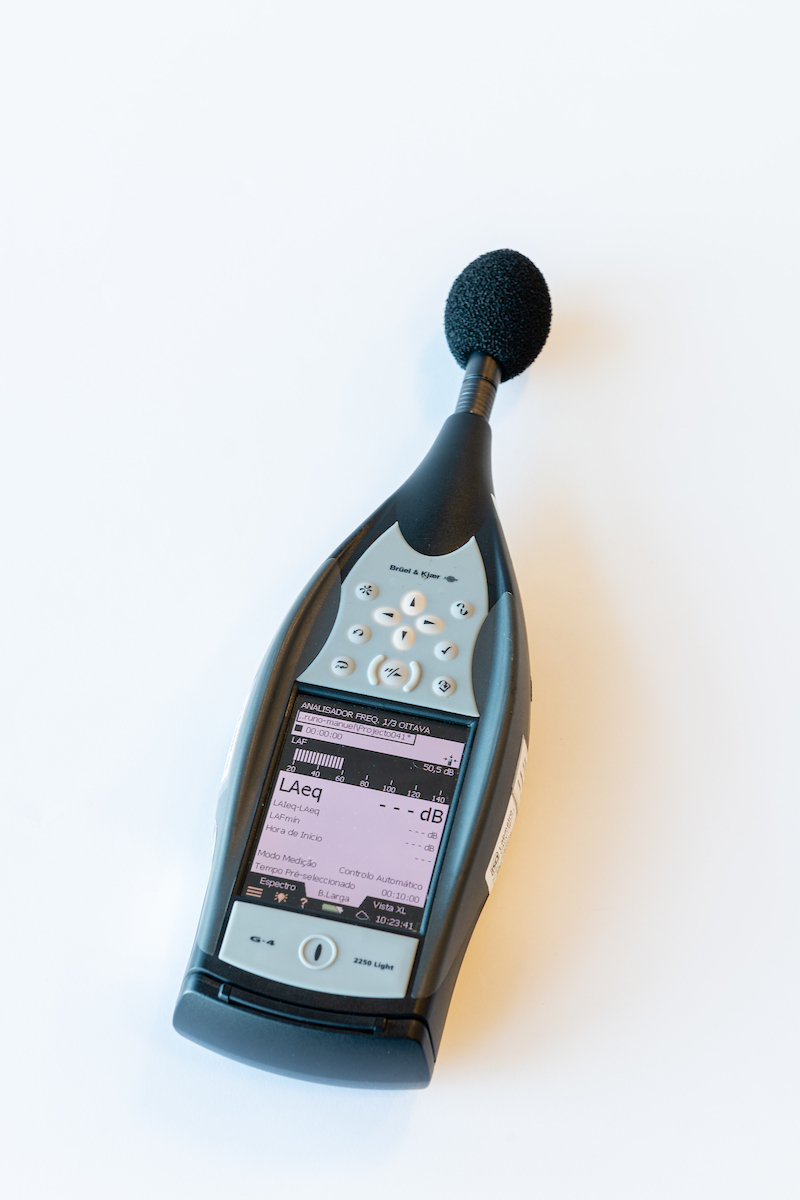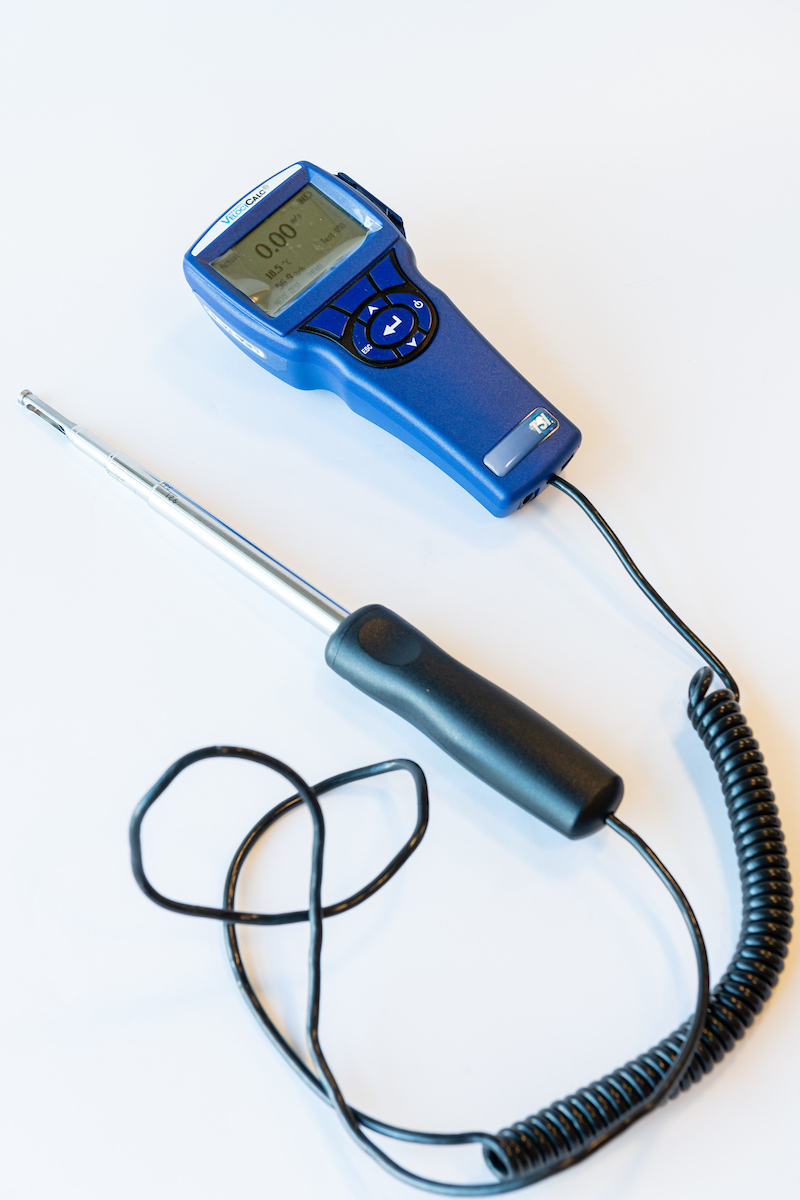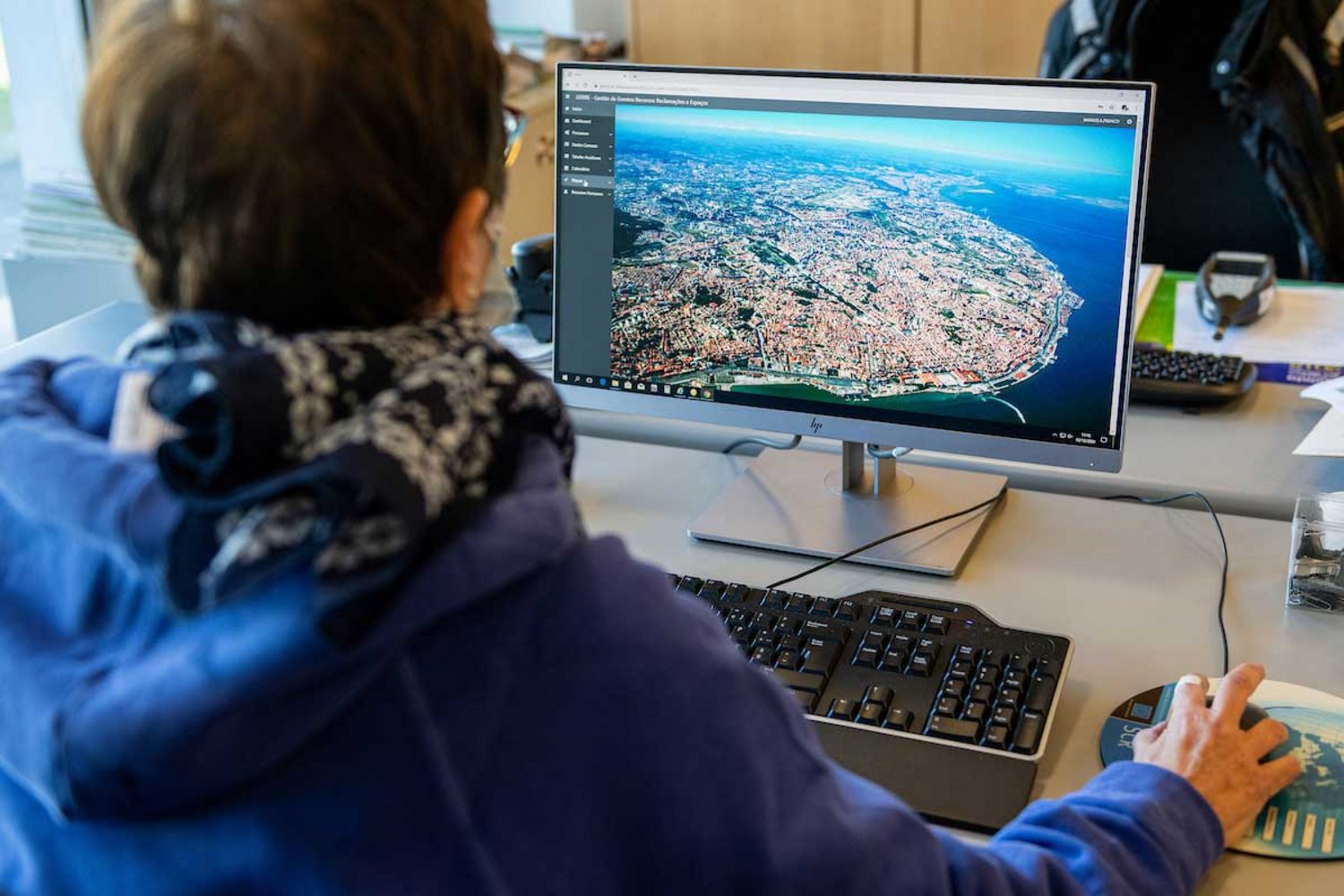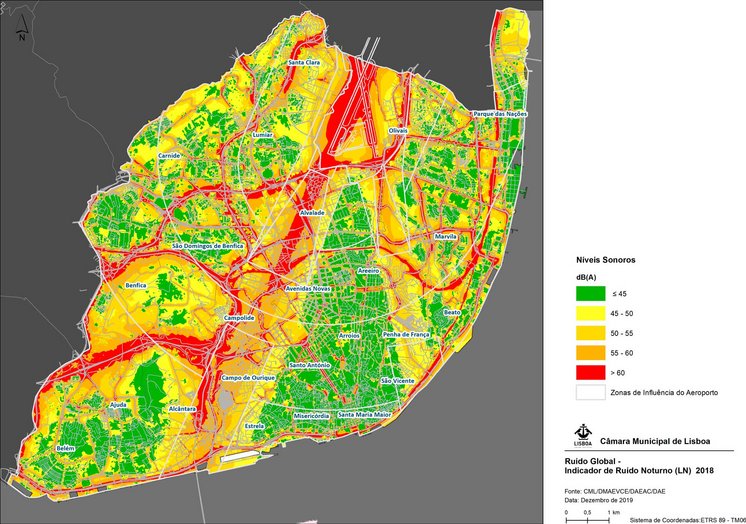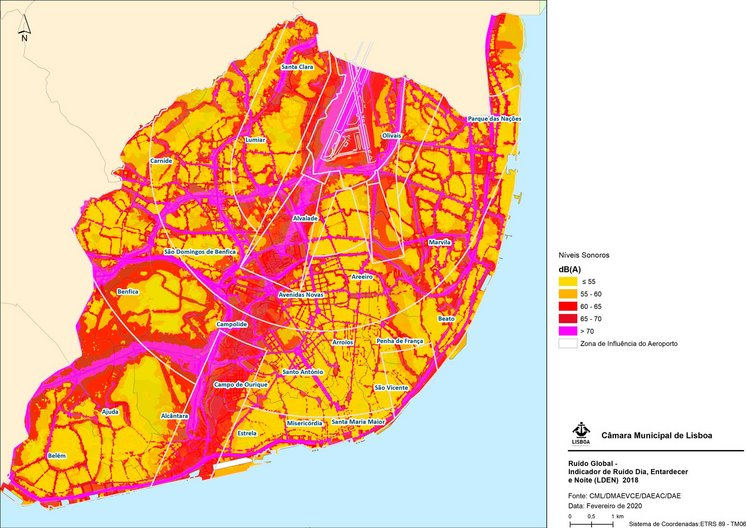Noise assessment
Assessing and managing environmental noise, reducing the number of people exposed to excessive sound, ensuring quality of life parameters and improving the quality of the acoustic environment are some of the current and future concerns in city management.
Municipalities are responsible for assessing and managing environmental noise(Decree-Law no. 146/2006).
Lisbon City Council, through its technical Noise Assessment team, has the mission of providing information to Lisbon residents on environmental noise and its effects, monitoring noise exposure in the external environment, drawing up Strategic Noise Maps for the city and approving action plans to prevent and reduce environmental noise and its effects in Lisbon, as well as raising awareness among the population of measures and behaviors to adopt.
Noise in cities and the role of the municipality
Noise is one of the main causes of the deterioration of the quality of life and the environment in cities, so much so that the existence of silence is often strange and there are rare moments of enjoyment of pleasant sounds.
Noise has always affected cities, increasing as they grow and evolve. As early as 600 BC in ancient Greece, craftsmen were forced to locate their workshops outside the city so as not to disturb the peace of the inhabitants with excessive noise. With the industrial revolution, a period of great technological development, the noise problem worsened. Today, this is a global challenge, prioritized differently in each city and country.
In our daily lives we are exposed to a wide range of sound intensity levels. There are various sources of noise in urban areas, such as traffic, cultural activities, commercial activities, events, demonstrations, among others. A busy street with a large concentration of people and cars can reach 90 dB ( A) and a rock concert can reach 115 dB(A). These are considered high noise levels.
Recently, Lisbon has invested in increasing its green structure, offering citizens the chance to practice sports, go for walks and encourage healthy lifestyles in the various parks and gardens, where the sounds of nature can be heard quietly.
In an effort to improve environmental quality in the city, Lisbon City Council regularly monitors, assesses and inspects noise.
This activity, Noise Assessment, is carried out by specialist technicians from the Environment, Energy and Climate Change Division, and involves monitoring construction sites, commercial and catering establishments, public spaces, residences, parties and events, among others.
Every year, Lisbon City Council receives around 600 complaints about the operation of various types of activities such as gyms, bars, nightclubs, restaurants, supermarkets, butchers and laundries.
Noise management in the city of Lisbon
Noise management is a shared competence between public and private entities and bodies.
In the city of Lisbon, noise is managed by the Municipality, the Portuguese Environment Agency, the Lisbon and Tagus Valley Regional Coordination and Development Commission, the General Directorate of Health, the Regional Health Authority, the National Emergency and Civil Protection Authority and the entities that manage road, rail, air and port infrastructures.
Lisbon City Council is responsible for:
- the decision to license noisy activities, both temporary and permanent, imposing conditions for them to take place, and monitoring to ensure that everything runs smoothly, thus promoting the population's quality of life;
- adopting measures to help minimize noise, such as applying noise-abatement flooring, speed limits in some residential districts (Zones 30) and adopting reduced emission zones (ZER), applying noise barriers, promoting soft mobility through the city's network of cycle paths, promoting the use of public transport (passes), increasing green spaces, among others.
Legal framework for noise in Portugal
Legislation on noise prevention and noise pollution control has existed since 1987 and is currently regulated by the General Noise Regulation - RGR (Decree-Law no. 9/2007, of January 17). This is intended to regulate the noisy activities that usually disturb us, whether permanent or temporary, such as transport, construction work, shows, night-time activities, as well as neighborhood noise and other noise sources.
The State is responsible for safeguarding the health and well-being of the population with regard to environmental noise, and rest and sleep are considered in the Constitution of the Portuguese Republic to be fundamental rights of personal integrity(Article 25) and of the environment and quality of life(Article 66).
The World Health Organization (WHO) considers environmental noise to be a very important issue for public health and has therefore developed environmental guidelines for Europe to protect human health when exposed to environmental noise from various sources, defining noise limit levels for day and night.
General Noise Regulations
The General Noise Regulation (RGR) establishes the legal framework applicable to the prevention and control of noise, always with the health and well-being of the population in mind. This regulation considers residential, school, hospital or similar buildings and leisure spaces to be sensitive receptors.
Noisy activities have different rules of action defined by the RGR, aimed at the various sources of noise. These are classified as
- Permanent noisy activity: any activity that produces permanent and annoying noise in its vicinity (bars, nightclubs or concert halls).
- Temporary noisy activity: any activity that produces noise as an isolated and temporary act (construction work, festivals, pilgrimages, fairs, rallies, dances, etc).
- Neighborhood noise: noise associated with residential use and its activities, produced by someone or an animal under their responsibility, which affects public health and/or the tranquility of the neighborhood.
The municipality intervenes according to the RGR in the various activities, with the aim of minimizing the effects of noise on the city's population.
This regulation defines three reference periods with different limits to minimize noise nuisance:
- thedaytime period defined as from 7:00 a.m. to 8:00 p.m;
- theevening period from 20h00 to 23h00;
- night time from 23h00 to 7h00.
Acoustic Testing Laboratory
The acoustic tests and measurements required to verify compliance with the General Noise Regulation (RGR) are carried out at the Lisbon City Council Acoustic Testing Laboratory (LEA), which has been accredited by the Portuguese Accreditation Institute(IPAC) since April 2013, under accreditation number L0651.
The Acoustic Testing Laboratory (LEA) analyzes an average of 50 cases every year.
Sound and Noise
Sound is a vibrational phenomenon resulting from the vibration of air particles.
It has a frequency measured in hertz (Hz), and an amplitude which expresses the intensity of that sound. Sound needs a material medium to propagate and its speed of propagation depends on that medium, with air being considered the main propagation medium.
Sound becomes noise when it becomes unpleasant, disturbs rest, is uncomfortable, annoying, undesirable and affects human health, sometimes irreversibly. The level of annoyance of noise varies depending on the source, the distance from the place of reception, the means of propagation, the time of exposure, the intensity of hearing, the time of day and the sensitivity of the receivers.
How is sound measured?
Sound levels are measured based on the sound pressure level, measured in Decibels (dB), which is the unit used to measure sound intensity.
The sound level meter is the most commonly used piece of equipment for measuring sound by frequency and sound pressure level (SPL), which corresponds to the human sense of hearing in terms of sound.
They are a graphic representation of the spatial distribution of external ambient noise levels and identify the municipality's priority areas for intervention, for different indicators.
It is on the basis of these maps that measures are planned to reduce the effects of noise, for example noise barriers, elements that protect populations exposed to noise above the legal limits, usually in areas with heavy road traffic.
As a rule, these are engineering solutions, but they can also be natural elements of the site's topography or natural vegetation. Their use within cities must be careful, as they cannot constitute a physical or visual barrier to road users.
License for a temporary noisy event
Temporary noisy activity
Any activity that is not an isolated act, is not permanent in nature and produces noise that is harmful or bothersome to those who live or stay in places where the effects of this noise source are felt, such as: festivals, fairs, sports competitions, shows, parties or entertainment, live music and markets, among others.
Are you organizing an event with temporary noise activity?
apply for a Special Noise License (LER)
holding a private party in a private home or garden does not require a special noise license (it falls under Article 24 of the General Noise Regulation and is subject to inspection by the police authorities, under the terms of Article 26).
Noise complaints
Entity to contact depending on the source of the noise
| Noise source | Type of noise | Entity to contact |
| Neighbors (pets, music, voices, dragging furniture, etc.) | Neighborhood noise | Public Security Police (PSP) |
| Restaurants, bars, nightclubs, shops, services, arcades, sports halls, car repair shops, laundries, gyms, religious activities | Noise from permanent activities | Lisbon City Council (CML) |
| Transport infrastructure (roads, railroads, airports) | Infrastructure noise | Operating entity |
| Parties, shows (sporting, cultural, recreational) and other entertainment in public spaces and gardens | Noise from temporary activities | PSP, Municipal Police, CML and Parish Council |
| Building works | Noise from temporary activities | Lisbon City Council (CML) |
| Equipment in common parts of buildings (elevators, ventilation systems, garage door automation, transformer stations and water drainage) | Noise from permanent activities | Lisbon City Council (CML) |
To report excessive noise quickly, use the "Na Minha Rua Lx" incident portal
Through this platform you can report problems in public spaces, municipal facilities and urban hygiene that require the intervention of Lisbon City Council or Parish Councils.
NaMinhaRua LxApp
Available in the App Store or Play Store
NaMinhaRua Lx website
You can also participate on the Na Minha Rua Lx website
Watch the tutorial and learn how to navigate the app easily.

